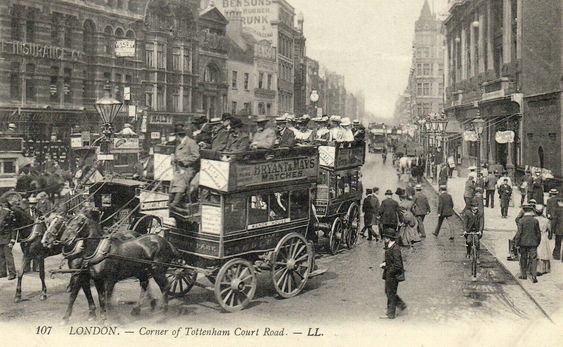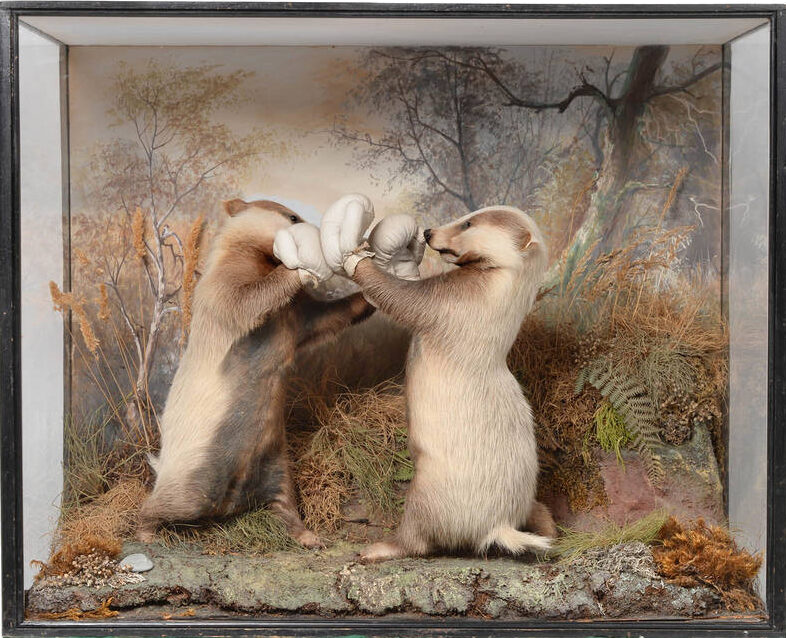The firm of James Gardner
Bird Preserver and Stuffer, Naturalists, Taxidermists, Furriers & Plumassiers and Entomologists
1837 - 1927
Mid 1800’s
THE BEGINNINGS OF THE 19TH CENTURY BUSINESS
James Gardner Senior (b. 1803 d. 1873) who opened the business in Holborn in 1837 was a contemporary of some of the most famous Naturalists in Victorian Britain including Henry Ward in Vere Street, London W.C. and Edward Gerrard in Camden Town, London N.W., and the Gardner firm’s work soon became sought after, including by Royalty.
James Gardner made some very high-quality diorama cases which usually had the trademark features of beautifully coloured backdrops and well-executed birds, and his cases often had ornate groundwork with nice foliage, but the jewel in his advertising crown was that he held Royal Warrants from Her Majesty Queen Victoria, The Royal Families of England & France and His Highness The Khedive of Egypt. It is on record that Queen Victoria paid a visit to Gardner’s with the Prince Consort and two young Princes who were arranging for stuffing of their pets.
In the early days of the Gardner business we see impressive preparations being made to display at The Great Exhibition of 1851 at the Crystal Palace, where the firm took a total of 96 feet, with a wall of 9 feet in height. We also see John Gould advertising his presence. Imagine the scenes!
The son of James Gardner, let’s call him James Gardner Junior (b. 1827 d. 1920), would follow the tradition established by his father of acting as the taxidermist for Sir Greville Smythe (b. 1836 d. 1901) who was conferred a Baronet by Queen Victoria. Sir Greville Smythe was a prominent naturalist and he travelled extensively to hunt mammals and birds in India, Egypt, Algeria, Australia, New Zealand, Jamaica, South America, the United States of America, and nearby Europe, and he also collected a vast number of birds’ eggs.

OVERVIEW
James Gardner by Royal Warrant from Queen Victoria
The company of James Gardner, Bird Preserver and Stuffer, Naturalist, Taxidermist and later, Furrier and Plumassier, began business in London in a shop in Holborn in 1837.
The family’s ascendants had a long history of working in the trade, and the time the last branch of the London firm closed, the family claimed they’d had a 200-year-old history with Royalty and Emperors as clientele.
The 19th and 20th Century business was conducted at several addresses in Oxford Street (partly due to renumbering of streets) up until 1920 and in Holborn until 1927 with three generations of sons, at the reigns.
Ultimately the business closed under pressures from the effects of the first world war, including the death of the last Gardner named James Alfred (b.1895 d. 1915) who was killed in action and there was no one left to carry on with the firm. Times were also changing with most of the business after the war being driven not by hunters, but by work for museums and scientific purposes.
After James Gardner Junior died in 1920, the firm of James Gardner closed its doors in the West End, Oxford Street, and its assets were old off at the famous Steven’s Auction Rooms in Covent Garden in of March the same year.
Here we see in this advert for the auction that the sale includes bird skins, birds in cases, heads and horns together with well-made cabinets and books, as well as lepidoptera and coleoptera since the firm of James Gardner was also an Entomologist.
In the early days of the firm, from about 1840, set up by James Gardner Senior the quality of some of the work was considered to be “variable”, with some modern day reports of evidence of a distinct lack of preparation and set up of some of his dioramas, particularly some of the earlier exotic bird scenes (Frost 1987). It is claimed that some laziness may have been present, since some birds were later discovered to have been set up with just one outward-facing eye, the inner eye that faced the back of the case being missing.
The report of the results of the Taxidermy section at The Great Exhibition of 1851 would also bear this out
Some examples of the work of the James Gardner firm
Some were beautifully executed cases with a trademark coloured backdrop
photo credits: AVW Antiques | Tennants Auctioneers |
IF YOU HAVE ANY IMAGES OF THE WORK OF JAMES GARDNER AND YOU’D LIKE TO SHOWCASE THEM HERE, TOGETHER WITH A FULL CREDIT, PLEASE CONTACT ME
Separate branches of the firm or a business split?

The advertising delivers the details
Looking through the adverts in old London newspapers we see that in 1870 the address of 371 Oxford Street is being advertised, but with a twist! James Gardner Senior advertises in The Sporting Gazette and says 371 Oxford Street is the only address. Then, underneath this advert we see a separate advert by James Gardner Junior working out of 426 Oxford Street.
At first, it looks like a simple case of several family branches, and there are several of the same types of adverts in this year – so it’s an ongoing campaign.
We also see their contemporary, Henry Ward, advertising at the same time, working from 2, Vere Street, Oxford Street, London – “A collector to the celebrated Audubon in America”
There are many more adverts placed in the newspapers of the day including the Sporting Gazette, The Farm Field and Garden, and The Field, as well as advertising for the two grand Exhibitions of 1851 and 1862 that show addresses at different periods.
The Trade Directories (Kelly’s and the Post Office Directory of Streets) also support the time periods and locations of the addresses.
In 1881 the census shows that the business of James Gardner Junior was trading from 292 Oxford Street and his wife, Mary, and daughter Mary are resident there. At the same time, the census records no inhabitants or business at number 371 Oxford Street (which is indicative of the death of James Gardner Senior earlier in 1873), and in both the 1881 and the 1891 census the records show no inhabitants or businesses at 426 Oxford Street.
We could be forgiven for missing the detail: but the family has suffered a separation and the business is split into two.
















































